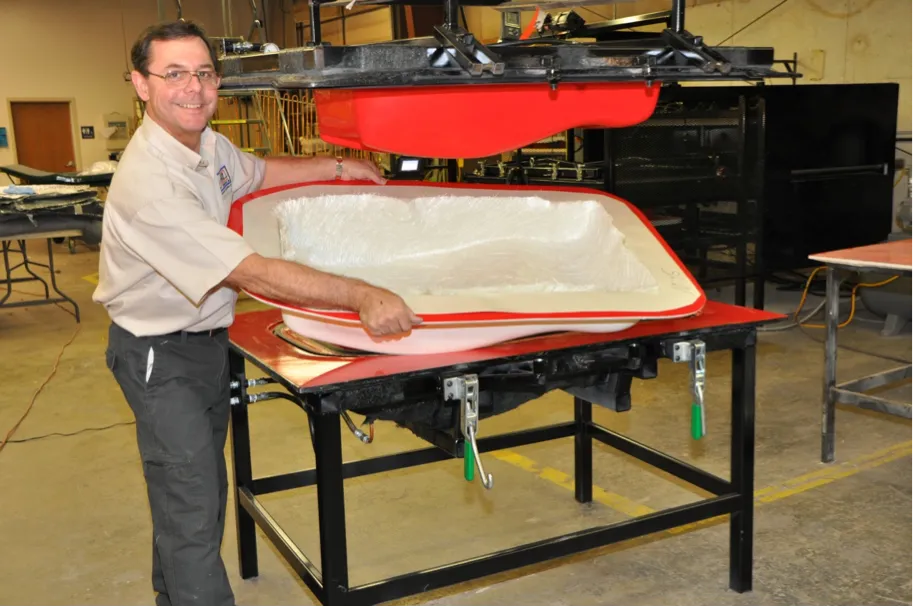In the late 90’s there were two innovative tooling methods to address the shortcomings of “soft” FRP Tooling as used for the “RTM” molding process at that time. These were the VEC and MIT technologies. VEC brought rapid and even temperature control using a tank of water as the mold base. The VEC tool was also far less structure as compared to the typical RTM tools of that time due to the support the tank of water provided, thus reducing the cost of the VEC mold since the tanks were common to several mold shapes.
Mold Insert Skin Tooling (MIT)
The MIT process method offered a “Mold Insert Skin” that allowed the mold cavity half to be “resurfaced” instantly. Soon however, it was clear that having extra MIT skins would allow for process steps such as Gel Coating, Fiber Loading and De-Molding to be done simultaneously while another part was in the actual mold set being injected and curing. The results proved that a MIT mold set could then increase productivity by as much as 270% by having as many as five mold skins rotating in the tool set.
It should be said, that the construction of a FRP mold is made of tooling gel coat and fiber reinforced tooling resin, yet historically these materials were permanent as the mold surface by the mold building process attaching the mold base structure directly to the said mold surface mold laminate. MIT simply separates the mold surface laminate from the mold structure in a precise manner. This method has been used on a variety of parts ranging in size from a Baseball Cap to a 21′ Boat Hulls and Decks.

Today, this innovative tooling design has been given some new enhancements, in the past the lower half (bolster) of the production tool set was needed to make new skins So production was lost while the lower mold half was making new MIT skins. Now, using a combination of the OSM Glass Master used to make the cavity and an LRTM upper mold matched to the Glass Master we make the MIT Skins using the LRTM process. This new molded MIT skin then fits perfectly and is vacuum locked into the production mold lower “bolster” to create a lower mold half. Today we have in effect enabled the LRTM process to make new tool surfaces, as easy as, making a part at a comparable cost.
Naturally the MIT Skin is made with Tooling Gel Coat and Tooling Resin with fiber reinforcement, yet cost is far more comparable to a part then making whole mold set. Having the ability to simply mold a new mold skin completely off line at a very nominal cost is proving to completely change the economics of FRP soft tooling allowing for dramatic reduction in post mold finishing as was historically common as the life of the mold developed surface imperfections that were transferred to each subsequent molding produced. What we find what makes this possible is the precise injection control provided by the JHM Technologies Infuser PRG injection system.
While this same process control has proven useful in reducing cost in making of production parts, it is now proving to allow the cost of tooling and tool replacement to be far more attractive as well.
